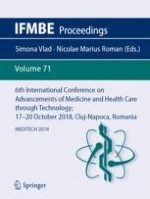2019 | Book
6th International Conference on Advancements of Medicine and Health Care through Technology; 17–20 October 2018, Cluj-Napoca, Romania
MEDITECH 2018
Editors: Simona Vlad, Prof. Nicolae Marius Roman
Publisher: Springer Singapore
Book Series : IFMBE Proceedings
